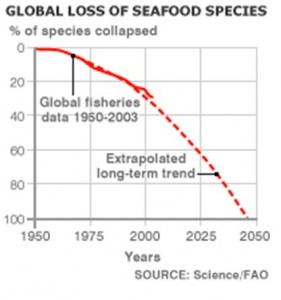A New Effort For Food Awareness

The European Union has a huge effect on patterns of seafood consumption. As the leading importers of fish products, the European Union has taken measures to protect global oceans and fisheries. Recently, in 2013, the European Commission agreed to implement the CFP, or Common Fisheries Policy. The fact is that fisheries and sustainable fisheries practices affect everyone. This is not a resource that stays put within state boundaries, as marine life is constantly migrating and moving in the global oceans. The European Union uses the European Commission to implement and improve policy in a way which transcends physical state boundaries.
Fisheries are a renewable resource, but the renewability relies on measures to prevent overfishing which can wipe out fish stocks, degrading marine environments and sending marine based economies into a recession. The INSEPARABLE project is an attempt to bring awareness to the difference that each consumer can make it choosing sustainable harvested seafood in order to ensure that the oceans remain prosperous and bountiful. The website, https://ec.europa.eu/fisheries/inseparable/en, features a campaign of pairing together consumers, workers, and fishers with the seafood that allows them to sustain their way of life. Whatever you have to say about INSEPARABLE, you have to admit that their logos are compelling!
Information Everyone Can Understand
INSEPARABLE is not a hard, scientific website with dry statistics preaching doom and gloom on the state of the marine ecosystems of our world. Instead, it features inspirational stories which showcase the need for sustainability and how our lives can be lived in a sustainable way. Even the resource section is filled with banners, posters and a FAQ which reads as a fluff piece highlighting the need to be a part of the sustainability movement. If you dig deeper to the “Resources by Country Section”, you can find country specific information, but prepare to be able to speak the regional languages in order to understand most of the information provided. The website and project seems to be a way to showcase the changes to the Common Fisheries Policy in a positive way, to inspire consumers and business to switch to sustainable seafood, and to paint the European Union as a pro-sustainability organization.
The European Union has been a force towards sustainability. Initiatives such as the 2010 IUU (Illegal, Unreported, and Unregulated) fishing program to document where fish are sourced and how they are caught in a sustainable manner is just one example of the programs that the EU uses in order to maintain a sustainable marine ecology. How does the EU implement and enforce this policy? Any seafood product entering the EU borders must be certified by the exporting country to comply with fishing regulations. The EU’s goals would appear to be largely economically related, as their fishing industry is one of the most highly regulated in the world, and, as such, they would wish to globalize their regulations in order to protect marine sustainability as well as put their producers on an equal playing field with the rest of the world. The fact is that sustainability movements cannot rely in the short term on ethical, moral, or way of life movements in order to make changes that respond to pressing matters and crises. While sustainability as a movement has made long term gains in shifting the attitudes of people, it is the economic situation of countries faced with losing their fish stocks that will cause the largest policy shifts.
I have always been fascinated by the creation and culture of different foods, particularly sushi and sashimi in the modern era of Japanese cuisine. I am a classically trained chef and sushi connoisseur, also having operated a food service company and enjoy investigating and experimenting with food around the world.